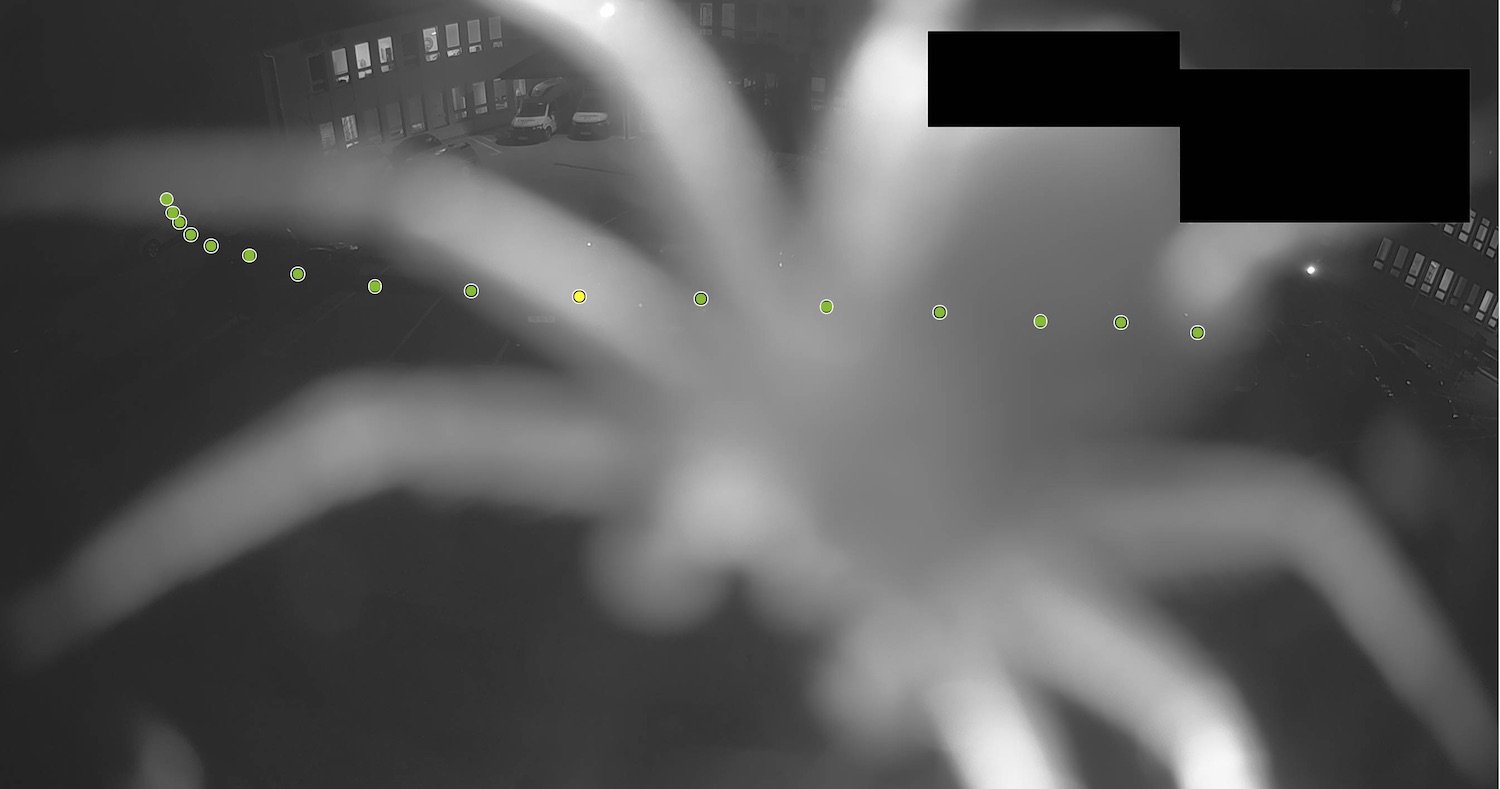Partners in the Spotlight
Selected integrations
AXIS ACAP - Parquery in-camera
Fotokite - Parking & Traffic Surveys
Parquery works with ANY camera
Why does Parquery’s solution work for any vehicle, parking situation, and weather condition?
Parquery’s smart parking solution uses cameras and Artificial Intelligence (AI) to monitor parking lots. The intelligent algorithms run either in the cloud or locally on the parking premises and detect vehicles in the camera images and determine whether individual parking spots are occupied.

Footage from one of Parquery’s customers demonstrates how robust Parquery’s AI solution is even in adverse conditions with several factors present simultaneously: at night time with little light, heavy rain, intense glare and reflections, and in the presence of occlusions.
Learn more about Parquery's project with SBB
The power of Parquery’s solution lies in its advanced Deep Neural Network algorithms - machine learning algorithms that allow the system to adapt to:
e.g., cars, trucks, buses, trains, motorbikes, bicycles, boats, tractors, construction or mining machinery, planes
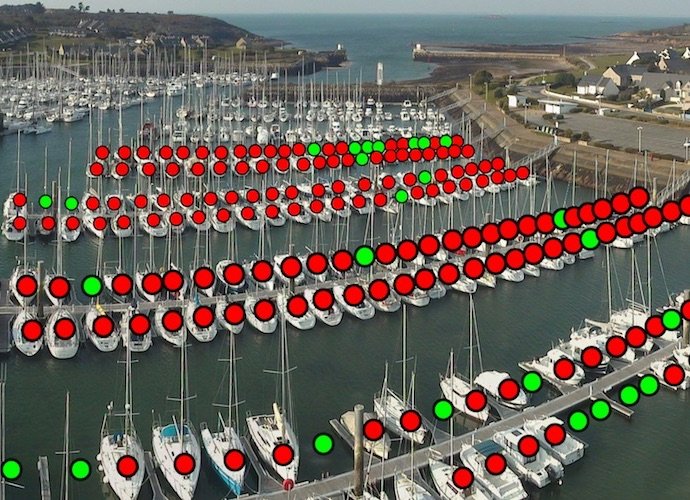
Boats
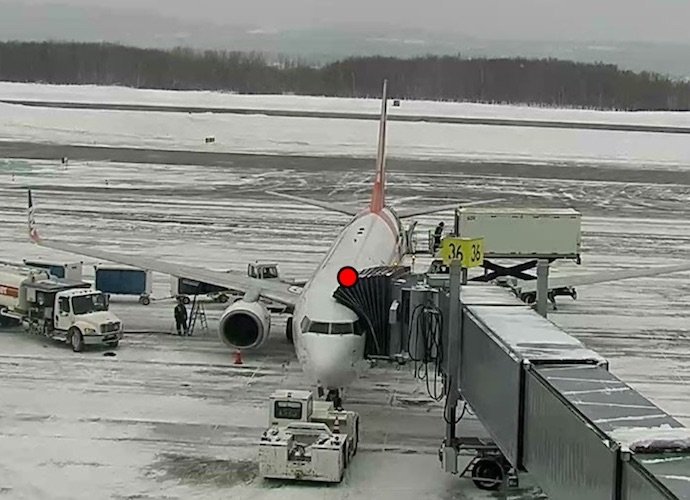
Planes
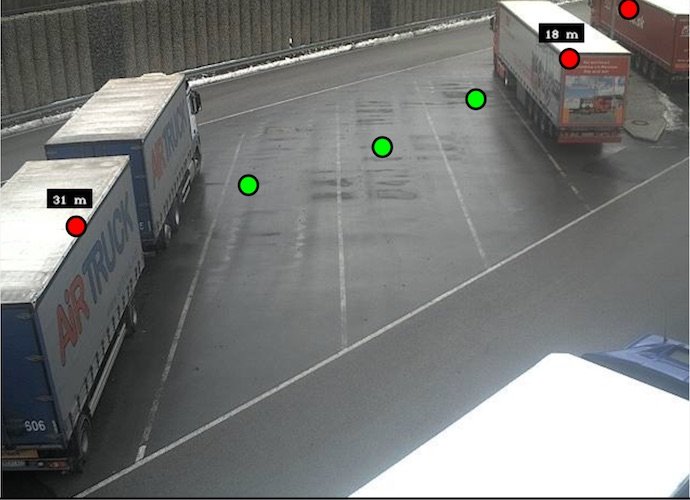
Trucks
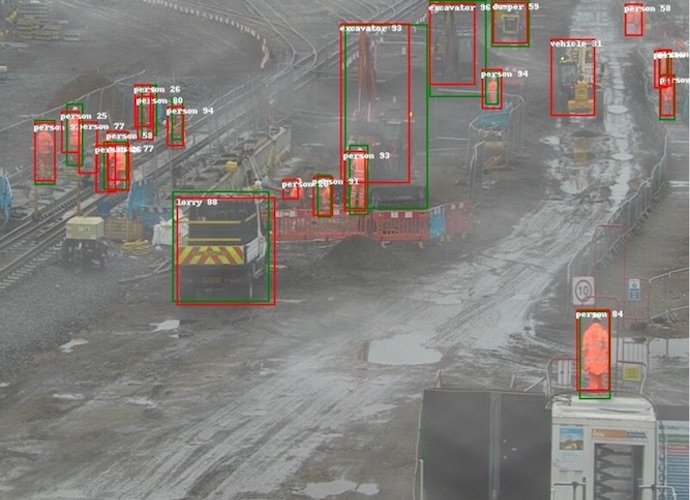
Construction machinery

Persons or silhouettes
e.g., indoors or outdoors, roadside parking, multi-storey car parks, highway truck parking, traffic counting, fuel stations, electric car charging
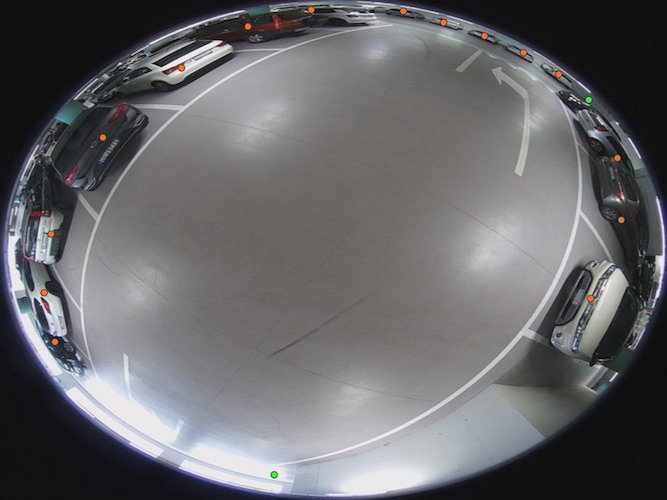
Indoors
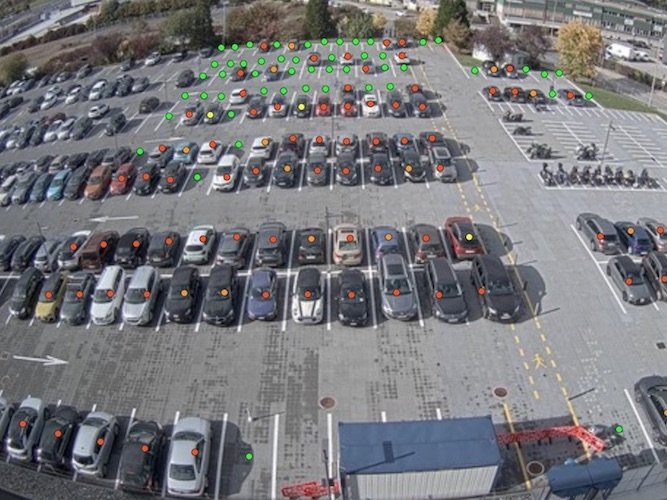
Outdoors
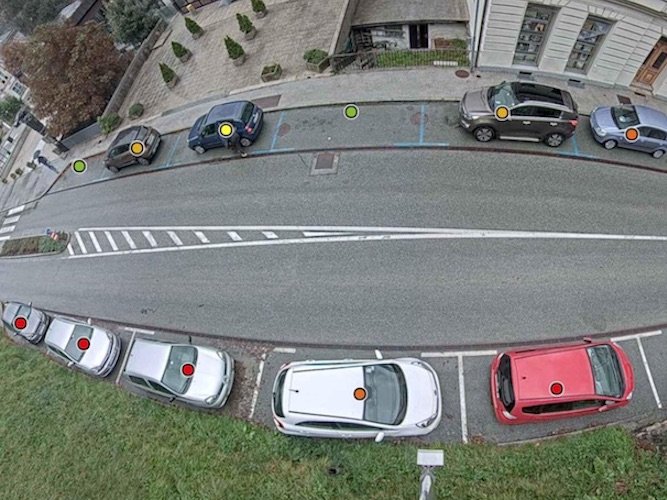
Roadside
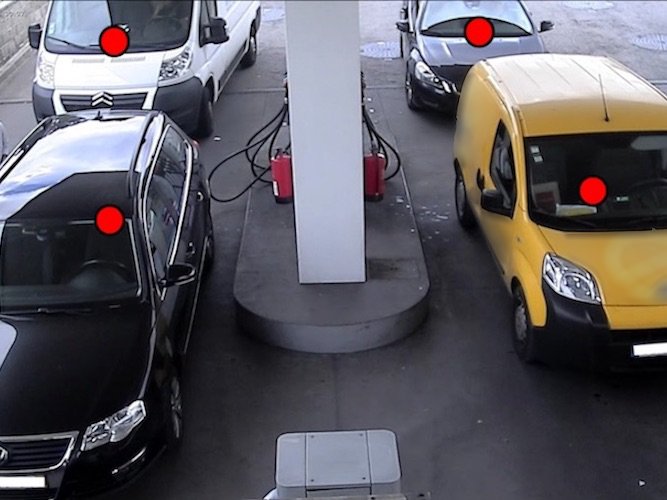
Fuel stations
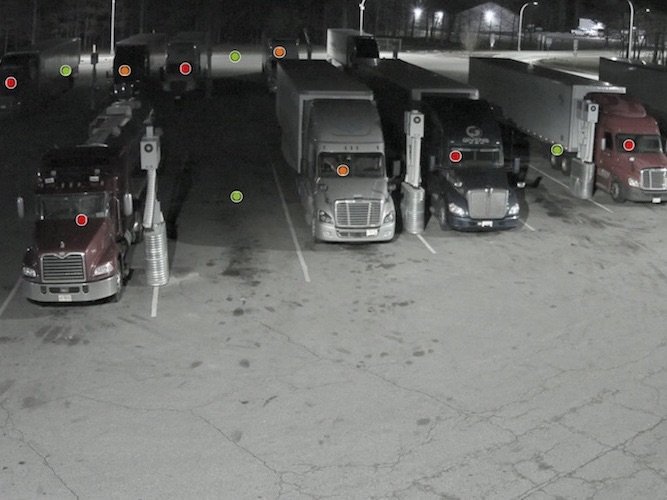
Highway truck parking
Any weather
e.g., glaring sunshine, glistening rain, covering snow, fog
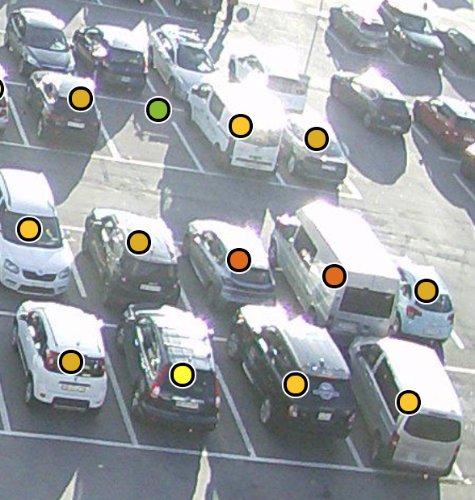
Glaring sun
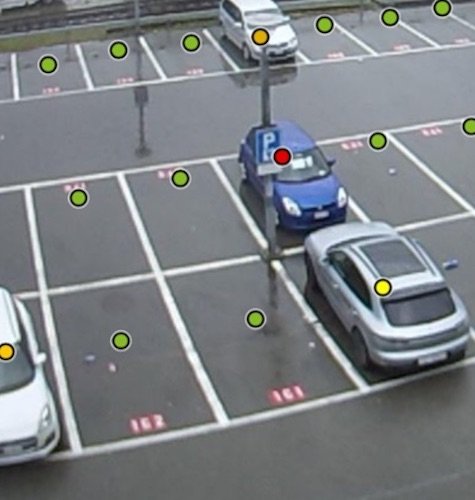
Reflecting tarmac in the rain
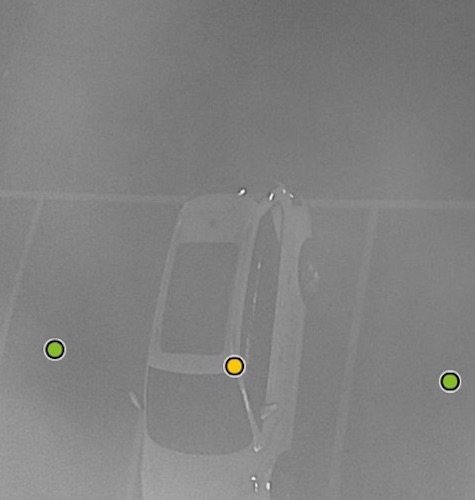
Fog at night
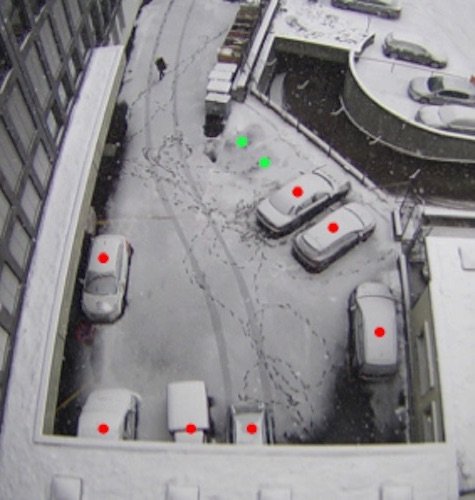
Snow
Any lighting
At day and night, with visible light or infrared, natural or artificial light from street lamps or spotlights, uniform illumination and extreme contrasts (e.g. strong sunlight), moving shadows

Night
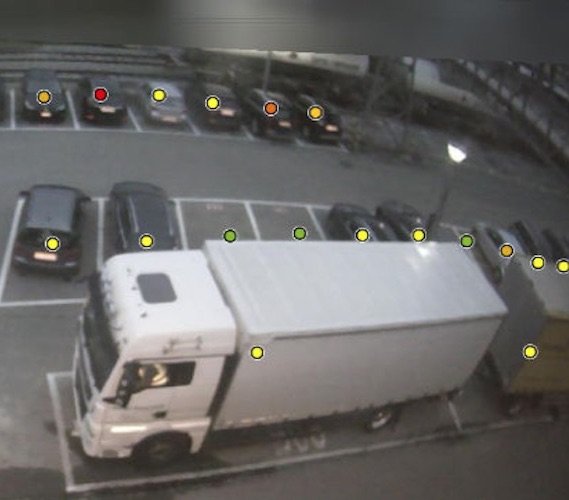
Twilight: natural and artificial light
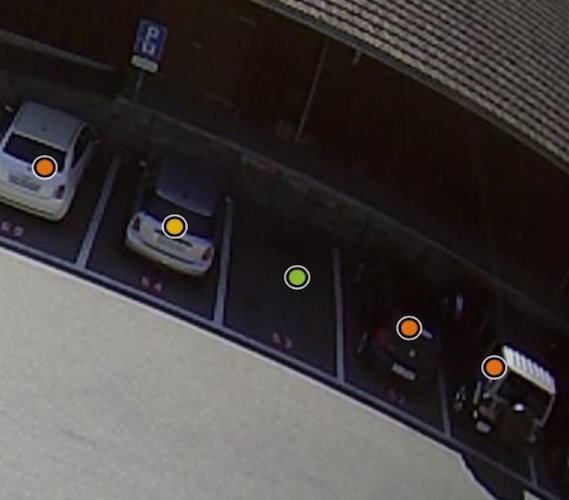
Strong contrasts
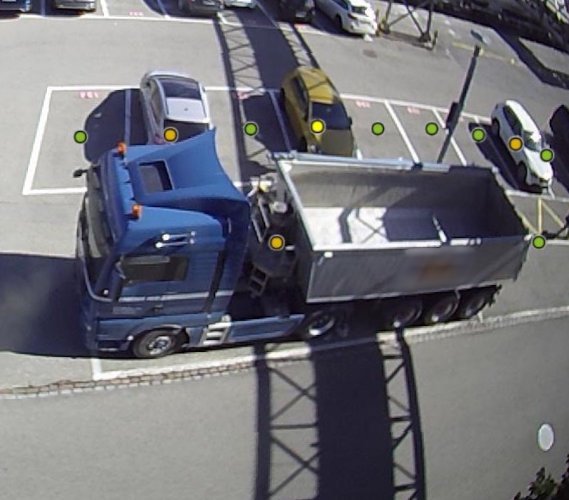
Moving shadows
e.g., CCTVs, webcams, steady and rotating, high-resolution and low, fisheye to narrow-angle lenses
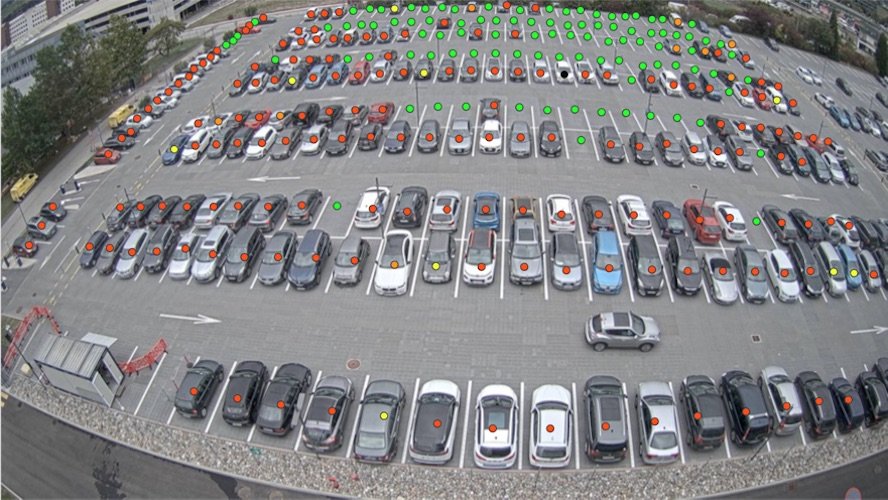
Wide-angle lens
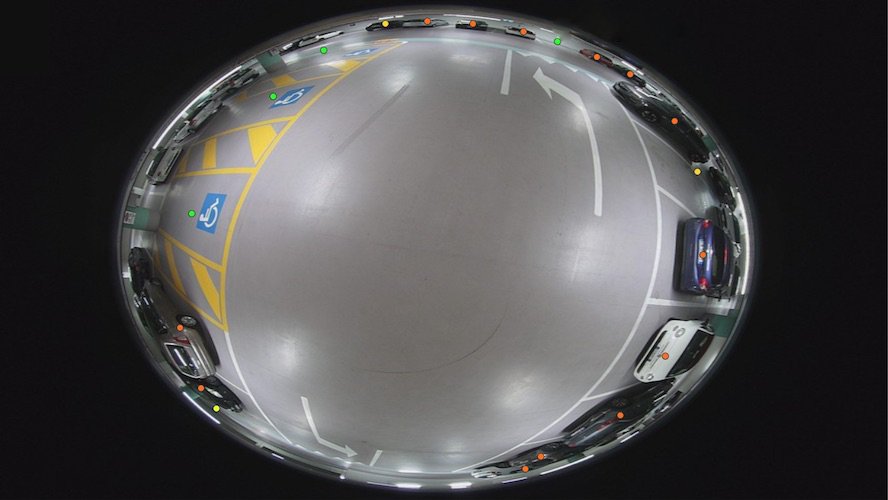
Fisheye lens
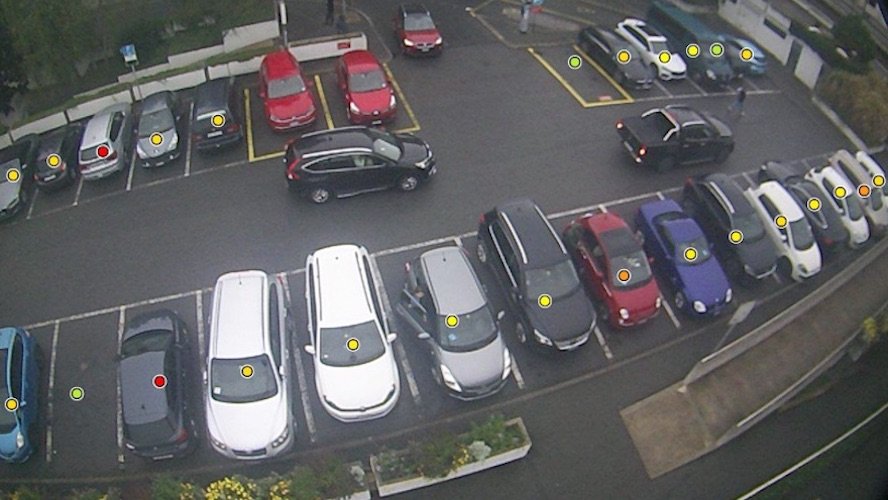
Regular lens
Parquery’s system adjusts to a new environment by training or experience - that means it learns from its mistakes - just like us. Starting with a generic model generated from various parking situations, this model is refined as time passes and optimized for the specific characteristics through training itself on the new data it receives. Thus, it gains experience and increases the probability of a correct outcome next time.
For example, the AI might incorrectly decide that a parked flatbed truck is a vacant parking spot due to the uniform appearance of its cargo deck, overlooking another differentiator that did not seem relevant for the decision. Through feedback about this mistake and training, the AI algorithm identifies and learns a vital differentiator to distinguish between an empty parking bay and an empty cargo deck. Thus it improves the probability of a correct differentiation subsequently.
Beyond the evident differences between parking lots - such as layout, arrangement of the spots, obstructions, or whether indoors or outdoors - other characteristics include lighting and weather conditions, the types of vehicles encountered, and visual distortions due to camera optics.
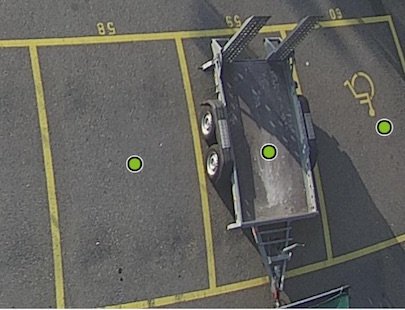


Before: trailer and flatbed truck incorrectly classified as vacant spaces.
Note that the appearance of the loading decks is similar to the road surface: the patterns on the loading deck have the mottled appearance of patched asphalt, tree shadows, oil stains, or puddles after rain.
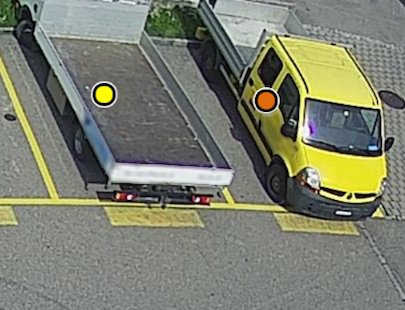
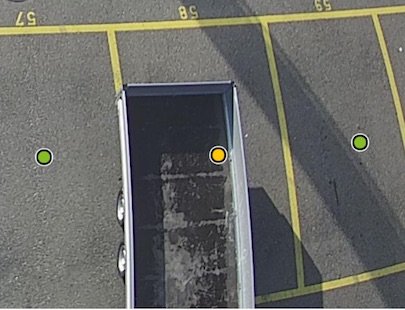
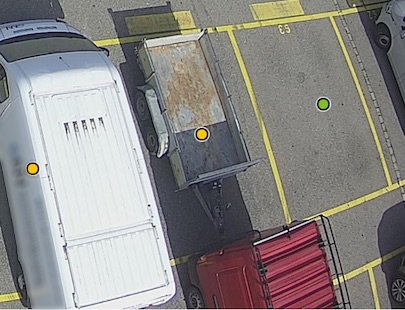
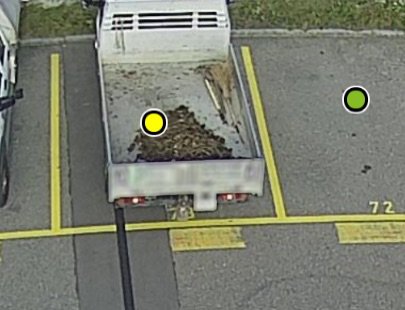
After retraining: the system correctly detects flatbed trucks without features, irrespective of where they are parked and differences in the camera perspective.
Typically, the out-of-the-box accuracy of Parquery’s learning solution is about 95% before adapting to the specific parking lot. The 5% error concerns undetected vehicles (so-called false negatives) and empty parking bays erroneously interpreted as occupied (false positives). Throughout the first month, Parquery collects and annotates image data of the parking lot to create the learning material for the AI algorithms.
By the end of the first month, Parquery delivers 99% accuracy thanks to training and adapting the algorithms to the requirements of the parking situation at hand.
The physical world is varied and does not conform to rigid norms, abstract rules, and theoretical models. Parquery’s system is built for this world as it is: This means it is robust to and accounts for imperfections, deviations, oversights, or changes.
Drivers might not conform to the boundary markings, park across or diagonally over several spots. Vehicles might be too large to fit into a single space but stick out or use several parking bays. Tree crowns, overhanging roofs, or large trucks might partially hide vehicles from the camera view. Cameras might only partially capture parking spaces at the edge of their fields of view.
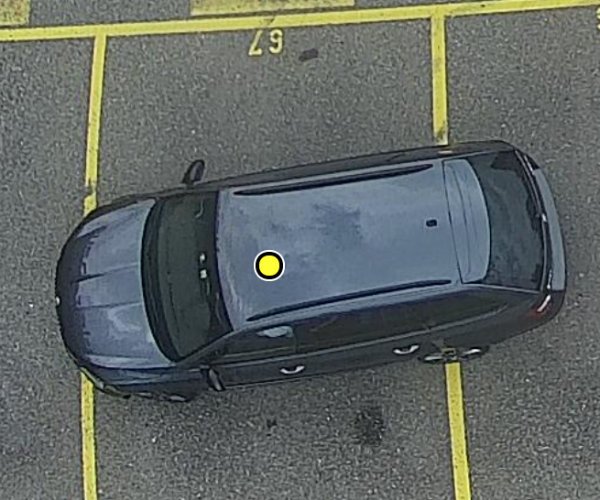
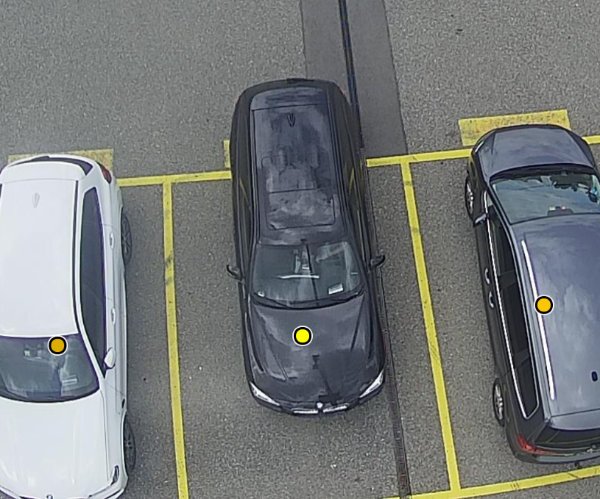

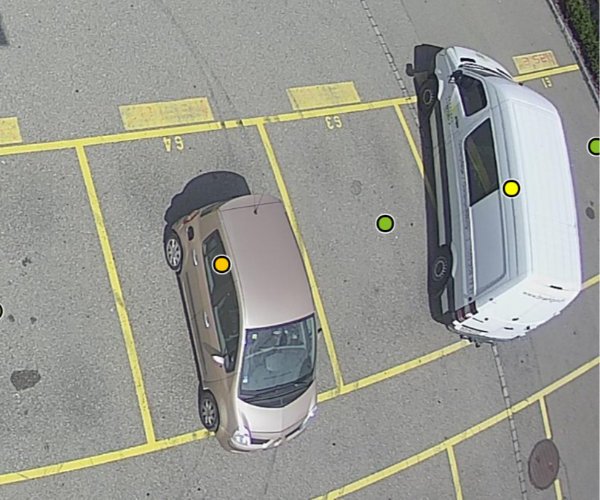
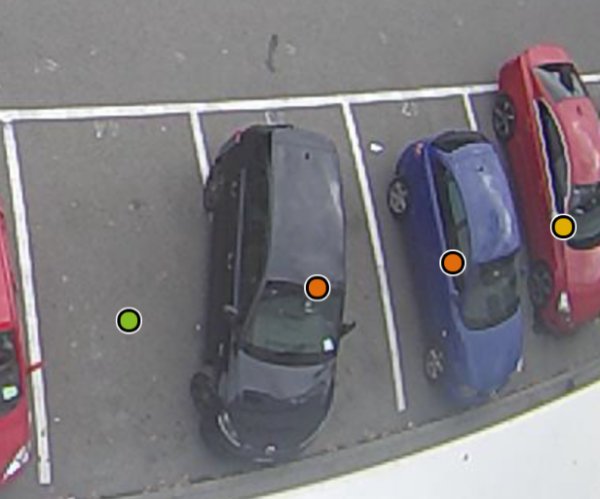
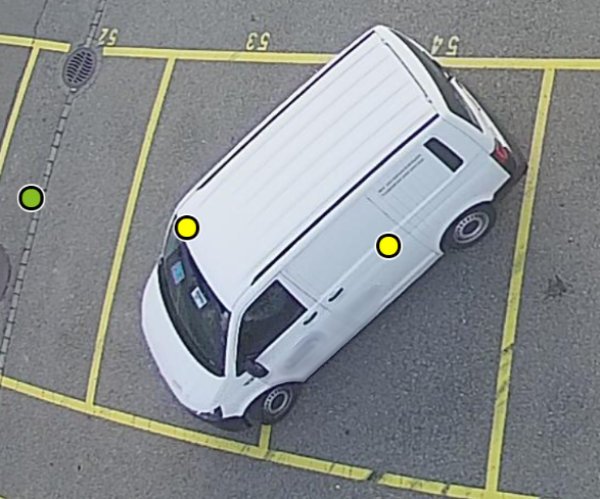
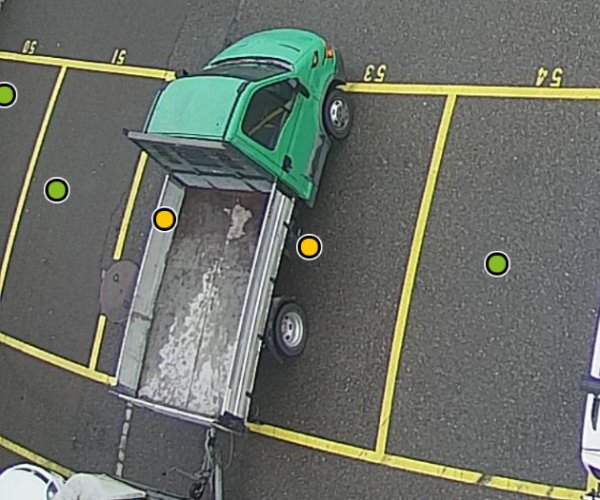
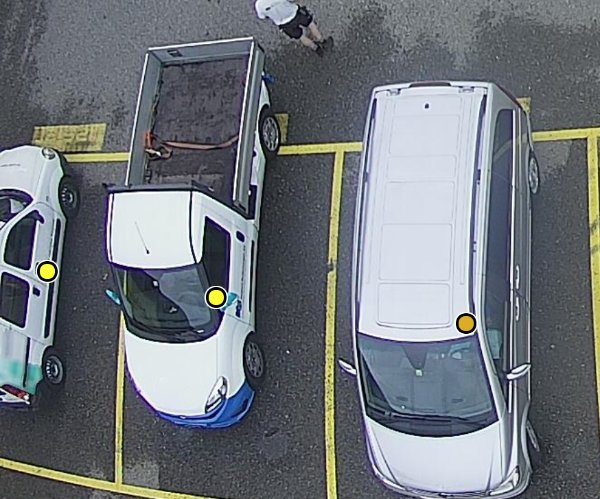
Parquery's algorithms detect vehicles regardless of whether they are parked improperly, at an angle, across, or protrude beyond the boundaries.

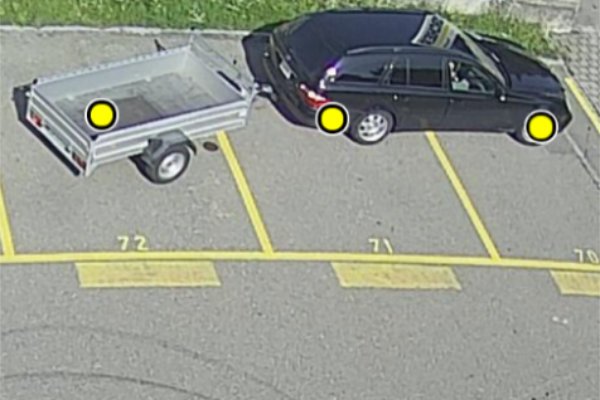
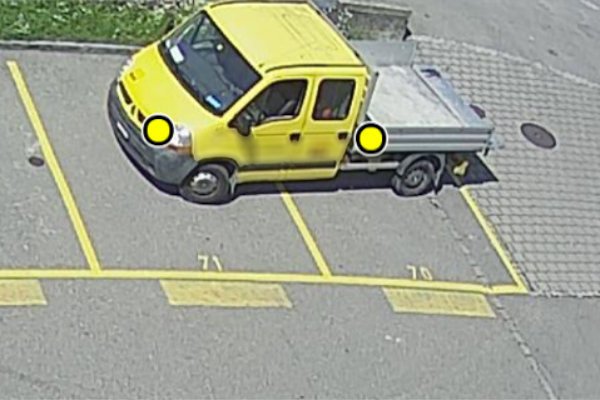
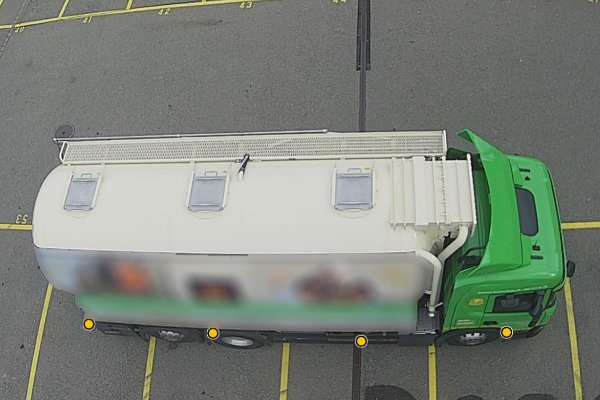
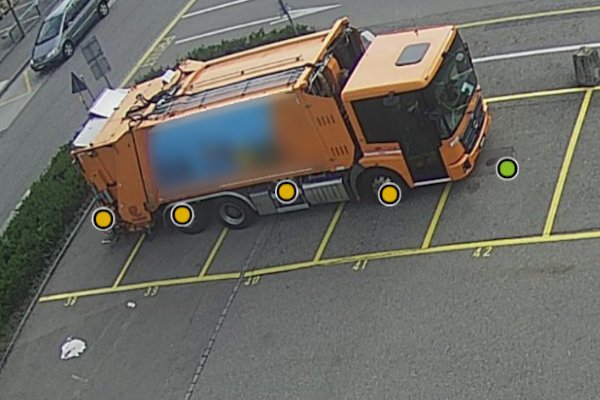
Even if the vehicles are parked across several parking spaces and do not adhere to the specified marking lines at all, Parquery's algorithms give accurate results.
For Parquery’s system to work, neither camera coverage nor parking habits have to be perfect. The algorithms function with incomplete data and detect partial vehicles - whether somewhat hidden by others, by pedestrians or bikes passing through, parked over several spots, being loaded or unloaded, or at the edge of the camera image where only a portion is visible.
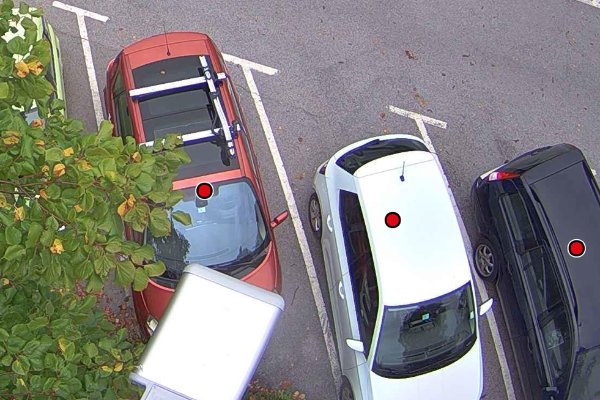
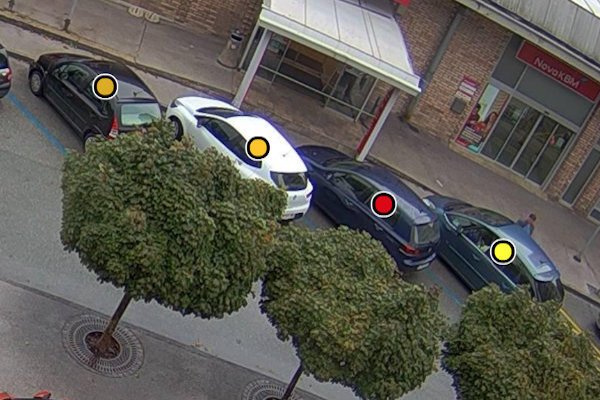
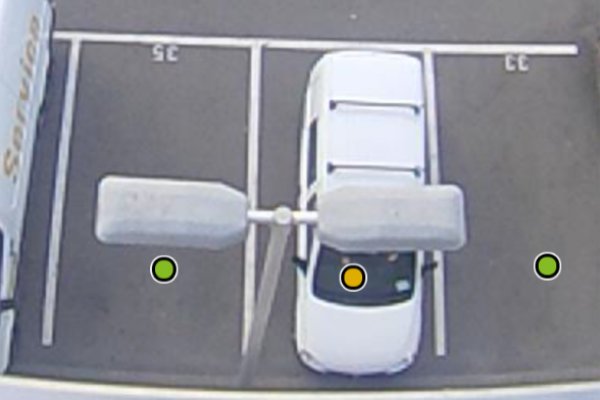
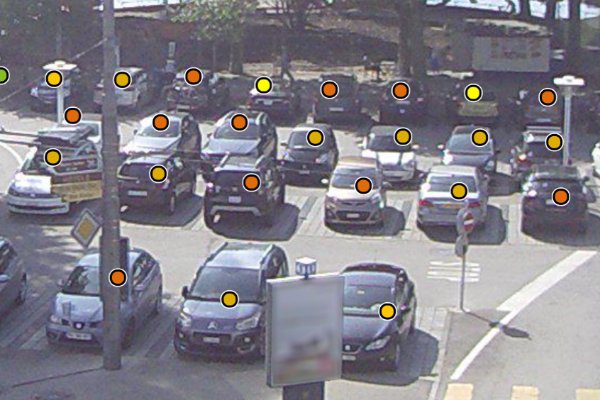
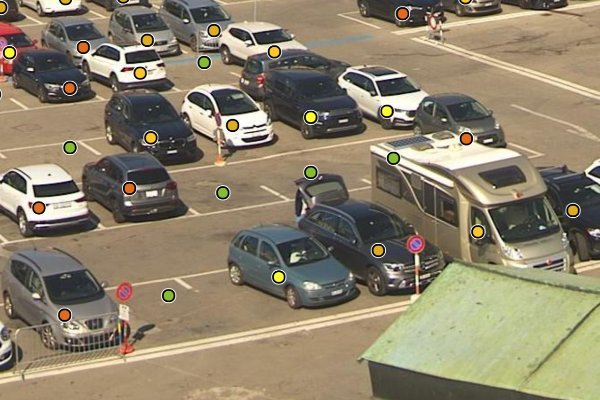
Permanent (trees, lamp posts, billboards, street signs, roofs) or temporary occlusions (no stop signs, construction site fencing)
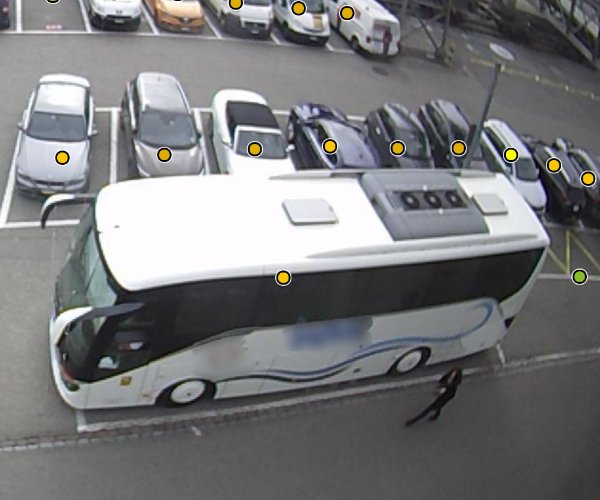
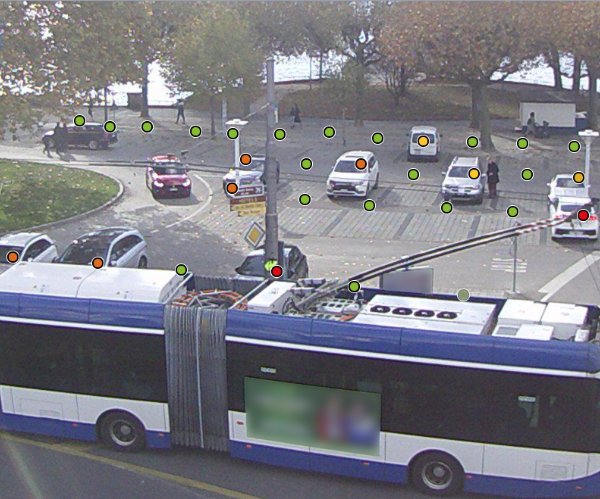
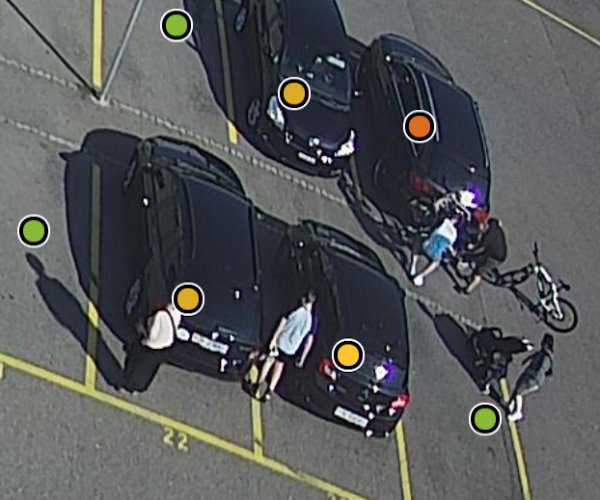

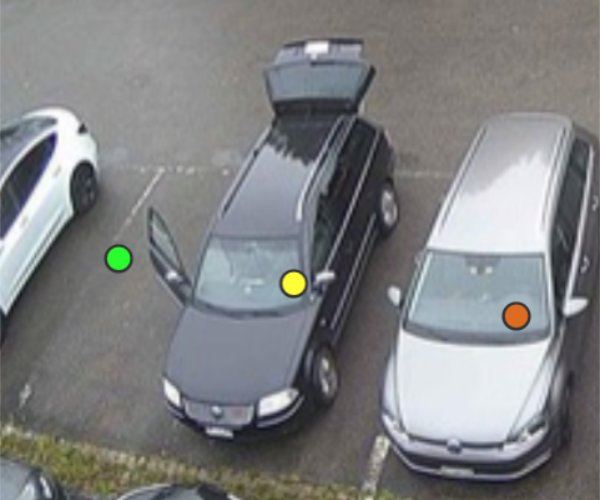
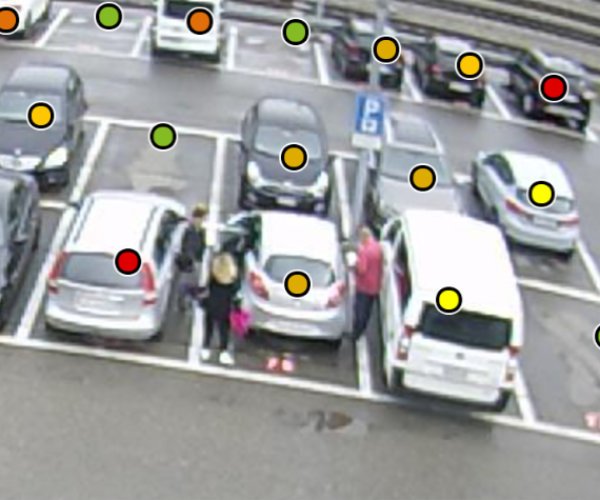
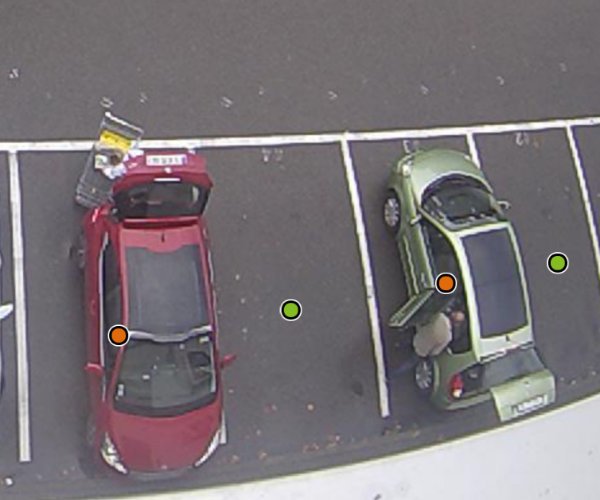
Partial occlusions such as passing busses, coaches, trucks, pedestrians, or bikes, and changes to appearance caused by e.g., open doors when loading and unloading or shopping trolleys do not impair detection.
At the same time, Parquery’s algorithms do the tightrope walk to remain robust to clutter, noise and background patterns that can resemble vehicle parts taken out of context. Oil stains, shadows, reflections, broken road surfaces, patches of repaired tarmac, tire marks, shopping trolleys, trash, or litter left behind are typical such issues.
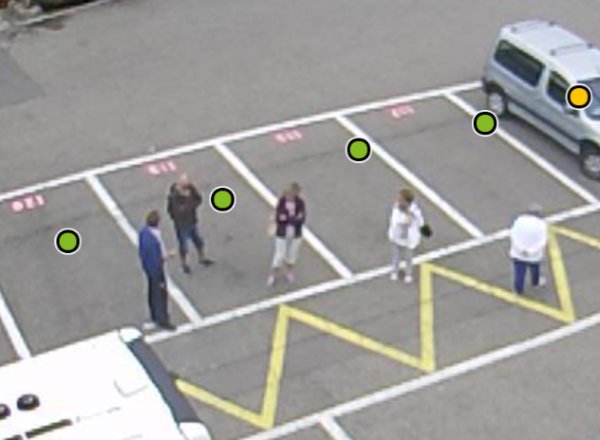
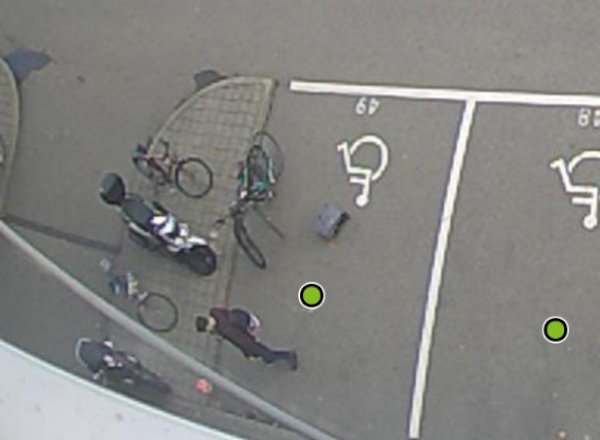
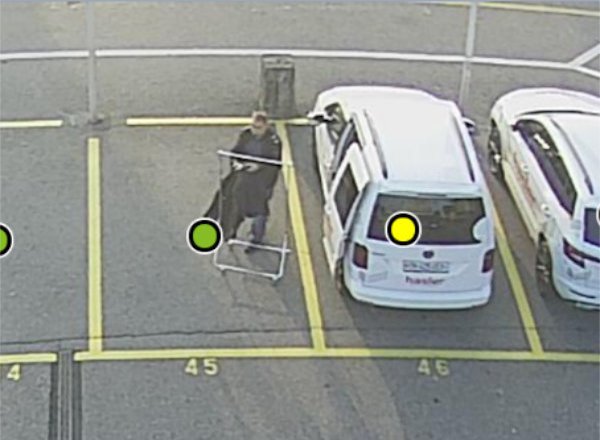
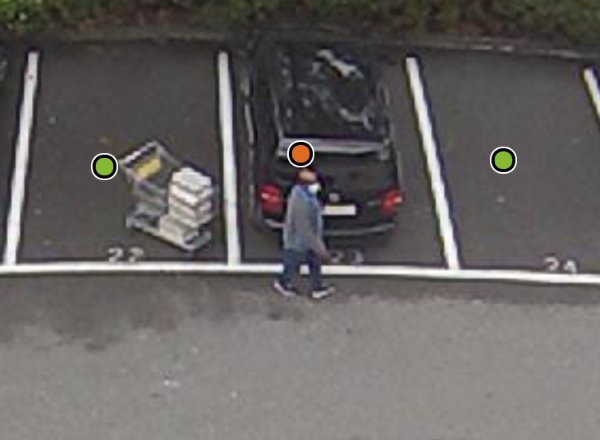
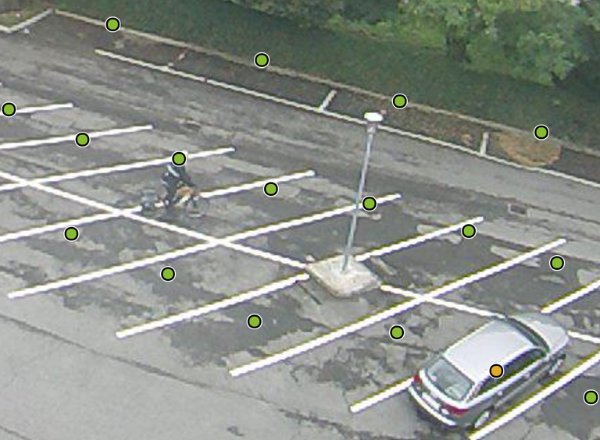
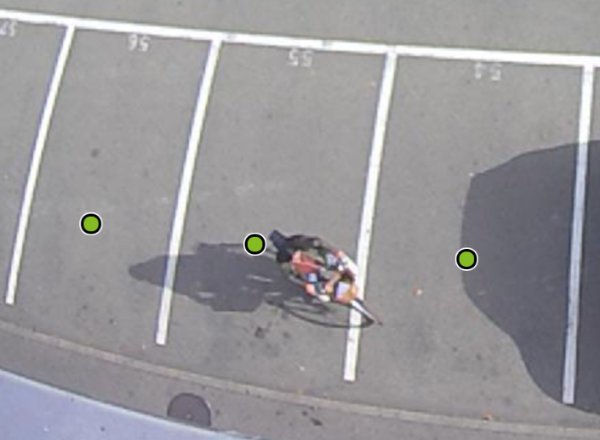
Parquery’s algorithms differentiate pedestrians, bikes, suitcases, trolleys, cyclists, etc from vehicles.
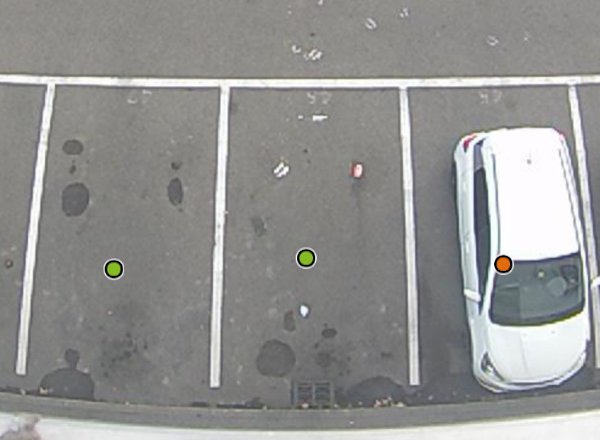
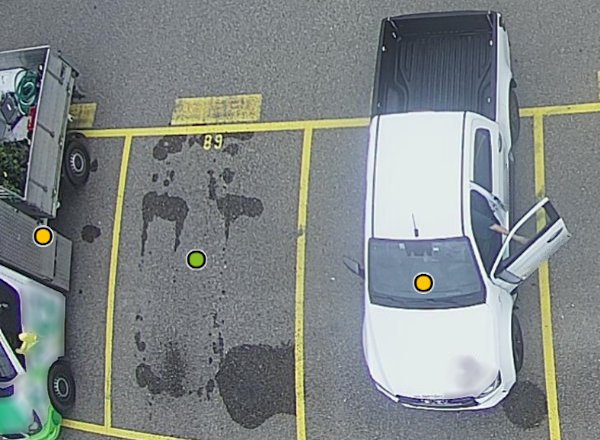
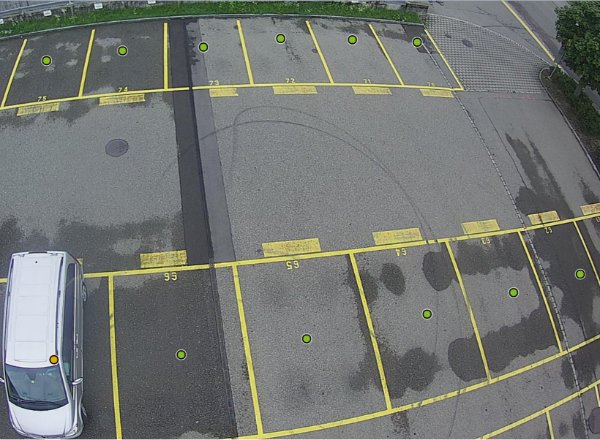
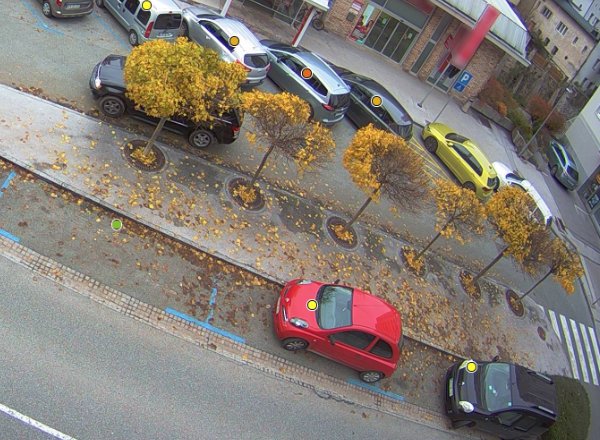

Litter, oil and water stains, drying rain, tyre marks, autumn leaves, or snow do not mislead Parquery’s AI.
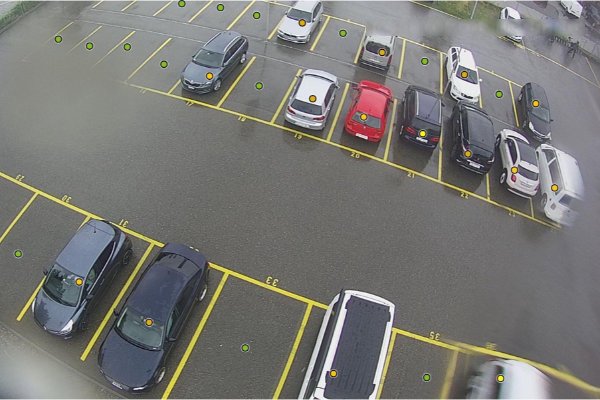
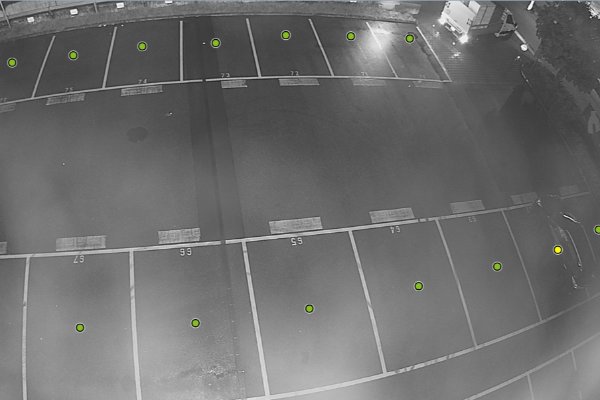
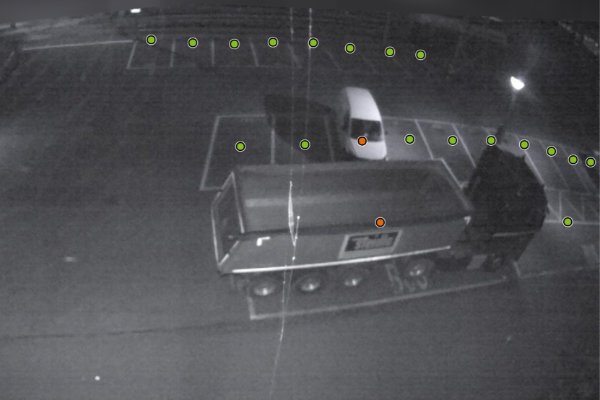
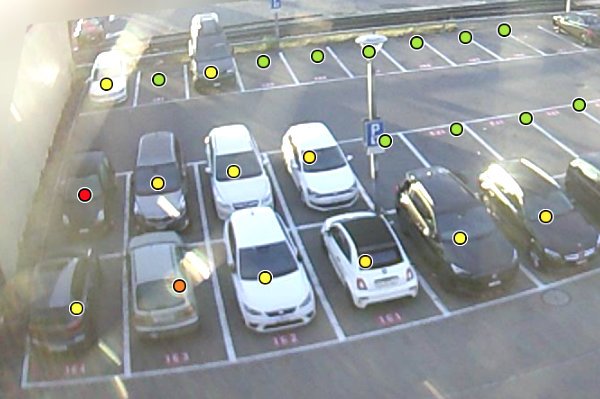
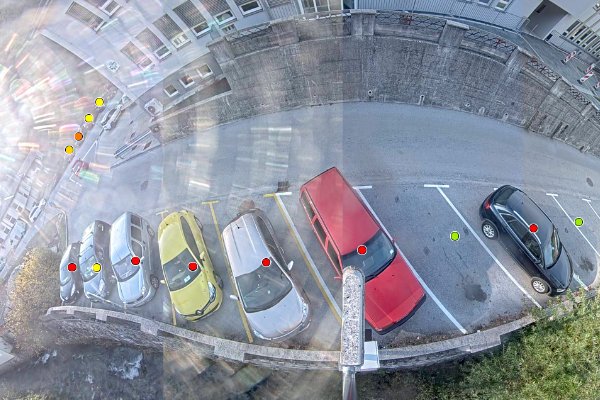
Parquery is also robust to other typical issues with camera-based systems, e.g., lens flare in backlight, scratches and pollutants on the camera lens, such as dust, rain drops, condensation, or even cobwebs that catch and reflect the light.
What are the fundamental components for Parquery's solution?
No system is 100% fail-safe - if the camera view is completely blocked, even the cleverest AI cannot make up for it.
Note, however, that in the original footage shown, one car (yellow dot) is still detected even though it is barely visible.
